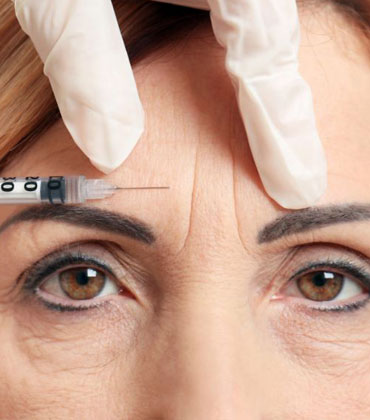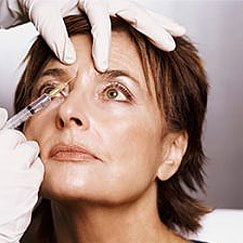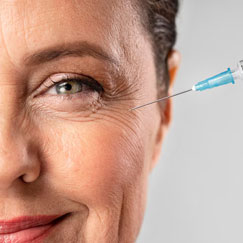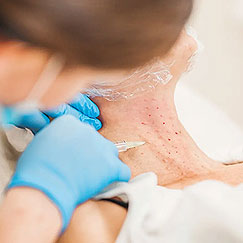Botox Treatments: A Guide to Anti-Wrinkle Injections
Botox Treatment utilizes Botulinum Toxin Type A, a purified protein, to temporarily relax specific facial muscles responsible for dynamic wrinkles. These are the lines that appear with expression, such as frowning, smiling, or squinting. Once injected, Botox blocks nerve signals to these muscles, causing them to soften and relax, which in turn smooths the overlying skin. It’s a highly popular, non-surgical cosmetic procedure renowned for its effectiveness in creating a refreshed and more youthful appearance without incisions or significant downtime. The treatment works precisely on targeted muscles, allowing natural facial expressions to remain while diminishing unwanted lines.
Common Treatment Areas & What It Addresses
Botox effectively targets various areas to smooth lines and subtly refine features:
- ✓ Forehead Lines: Reduces horizontal lines that appear when raising eyebrows.
- ✓ Frown Lines (“11s”): Softens vertical lines between the eyebrows caused by squinting or frowning.
- ✓ Crow’s Feet: Diminishes lines radiating from the outer corners of the eyes when smiling.
- ✓ Bunny Lines: Addresses lines on the bridge of the nose when scrunching.
- ✓ Gummy Smile: Lowers an overly high upper lip to reduce gum exposure.
- ✓ Masseter Reduction: Slims the jawline by relaxing enlarged jaw muscles.
- ✓ Neck Bands: Softens vertical lines on the neck for a smoother appearance.
Who Should Consider Botox Treatment?
Botox treatment is ideal for healthy individuals looking to reduce the appearance of dynamic wrinkles or prevent their formation. It’s suitable for those noticing lines when expressing emotions, seeking a refreshed look without surgery, or addressing specific cosmetic concerns like a gummy smile. A personal consultation is crucial to determine if Botox aligns with your aesthetic goals and medical history.
Understanding Risks: Safety, Side Effects, and Smart Choices
Botox is an FDA-approved treatment with a strong safety record when administered by a qualified professional. While generally safe, understanding potential risks is vital for smart choices. Common, temporary side effects are mild and localized. Serious complications are extremely rare but can occur if not administered correctly, underscoring the critical importance of choosing an experienced and certified practitioner for your peace of mind and optimal results. Some of the potential dangers & side effects of this treatment are:
- ✓ Temporary Bruising/Swelling/Redness: Happens at the injection sites.
- ✓ Headache: Mild and usually subsides quickly.
- ✓ Eyelid/Brow Ptosis (Drooping): Rare, usually temporary.
- ✓ Asymmetry: Slight unevenness, often correctable.
- ✓ Allergic Reaction: Extremely rare, but possible.
- ✓ Flu-like Symptoms: Very rare and temporary.
How to Prepare for Your Botox Treatment
Preparing for Botox is straightforward. To minimize bruising, avoid blood-thinning medications, aspirin, ibuprofen, fish oil, and excessive alcohol for a few days before your appointment. Inform your practitioner about all medications, supplements, and your complete medical history. Arrive with a clean, makeup-free face. Following these simple guidelines helps ensure a smoother treatment experience and optimal results, reducing the likelihood of minor side effects.
What to Expect During a Botox Treatment
During your Botox session, the practitioner will first conduct a brief consultation to confirm your goals and assess your facial anatomy. The targeted areas will be cleaned, and a topical numbing cream or ice may be applied for comfort. Using a very fine needle, small amounts of Botox are precisely injected into the identified muscles. The entire procedure is quick, typically lasting only 10 to 20 minutes, with minimal discomfort described as a tiny pinch or sting.
What to Know About Aftercare & Results
During your Botox session, the practitioner will first conduct a brief consultation to confirm your goals and assess your facial anatomy. The targeted areas will be cleaned, and a topical numbing cream or ice may be applied for comfort. Using a very fine needle, small amounts of Botox are precisely injected into the identified muscles. The entire procedure is quick, typically lasting only 10 to 20 minutes, with minimal discomfort described as a tiny pinch or sting.




